Newport to Poole/Bournemouth (3 days- 124 miles +1 day chilling)
This is the second trip from Newport to Poole. The first time was extremely cold and the fast roads caused some close calls with the cars, if we were to do this again, it would have to be a different route. I had broke my collarbone Several months before we were due to go and there was some concern if I was going to be fit enough, but whether I was fit or not was blown out of the water when one week before the ride; my cycling companion fell off his bike and broke his arm. I tried to cancel the hotels, but they were booked six months in advance and were non-refundable, I had to go or forfeit the money.
Day 1- Newport to Bath (42 miles)
We specifically organised the trip in mid august to have good weather, after all it was the middle of the summer, what could possibly go wrong. The day came and (forgive my French) it was pissing down; heavy rain was in for the day. I set off on my own, in full winter gear, including a little trick I picked up off some old touring cyclists; a shower cap over the helmet. It keeps the penetrating rain off your head, keeps it warm, and has good ventilation, but I found out going downhill it becomes very noisy, flapping in the wind, I guess shower caps are not meant to travel at thirty mile an hour. The old Severn bridge was horrendous, but I was warm. I stopped for my first tea at Olveston, a little bakery with tables outside. There, under a canopy I sat drinking my tea and I’m sure the locals thought I was mad, and to be honest I kind of agree with them.
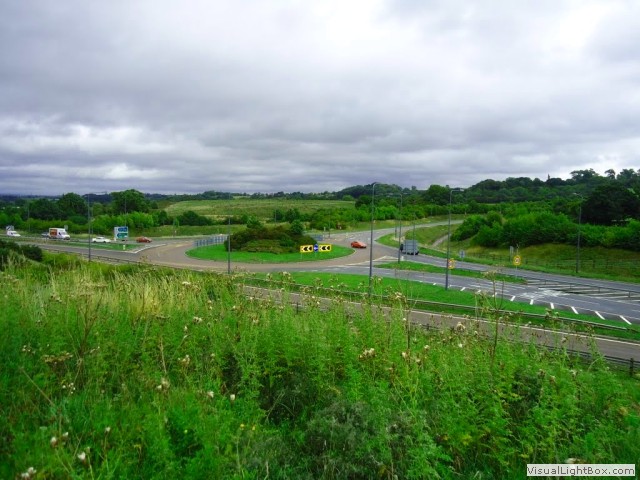 At a junction near Bristol I almost fell off the bike when my overshoe came apart and wrapped around my
pedal. I pulled into a small industrial unit and cut the cord off the bottom of both overshoes, then
continued. Before long I was on the cycle path adjacent to the south Bristol ring road. Some of this
road was actually built upon the Midland railways route to Bath. At Mangotsfield I passed an old winding
house from the colliery, shortly after I joined the Bristol to Bath cycle path. The next stop was
Warmley, at the old station cafe, then on again. The small station halt is preserved and is so popular
in the summer (when the sun shines if you can’t recall what happens in summer) that there is an extension
built around the back. A few miles from Warmley, the path eventually runs alongside an active railway line
and after crossing the track, I came to Bitton station, home of the Avon valley railway. Now this is a
proper station, its cafe is in an old railway carriage on platform two. The station contains many
locomotives, carriages, and wagons rescued from the scrap-merchant's cutting torch.
At a junction near Bristol I almost fell off the bike when my overshoe came apart and wrapped around my
pedal. I pulled into a small industrial unit and cut the cord off the bottom of both overshoes, then
continued. Before long I was on the cycle path adjacent to the south Bristol ring road. Some of this
road was actually built upon the Midland railways route to Bath. At Mangotsfield I passed an old winding
house from the colliery, shortly after I joined the Bristol to Bath cycle path. The next stop was
Warmley, at the old station cafe, then on again. The small station halt is preserved and is so popular
in the summer (when the sun shines if you can’t recall what happens in summer) that there is an extension
built around the back. A few miles from Warmley, the path eventually runs alongside an active railway line
and after crossing the track, I came to Bitton station, home of the Avon valley railway. Now this is a
proper station, its cafe is in an old railway carriage on platform two. The station contains many
locomotives, carriages, and wagons rescued from the scrap-merchant's cutting torch.
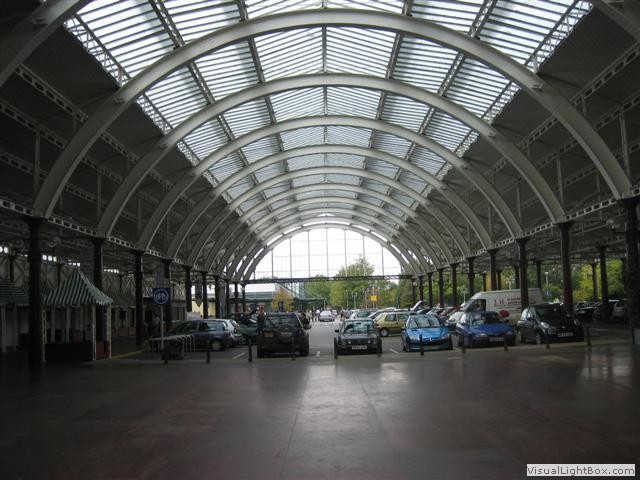 I reached Bath around one o’clock and just my luck; the rain subsided. After a lovely warm shower
I went for a walk and by accident stumbled across Bath Green Park station, the first big station in
Bath owned by the Midland railway. Now owned by Sainsbury the supermarket chain, trains no longer
stop at the station, but as the whole station was due to be demolished, I guess we should be grateful
to Sainsburys for preserving it.
I reached Bath around one o’clock and just my luck; the rain subsided. After a lovely warm shower
I went for a walk and by accident stumbled across Bath Green Park station, the first big station in
Bath owned by the Midland railway. Now owned by Sainsbury the supermarket chain, trains no longer
stop at the station, but as the whole station was due to be demolished, I guess we should be grateful
to Sainsburys for preserving it.
Day 2- Bath to East Stour (43 miles)
Breakfast was included in the hotel, so I had beans on toast (something I would later regret) and set off under a leaden sky. First port of call (next door) was Saint James cemetery containing some forty Commonwealth graves from the two World wars. They are sporadically placed around the graveyard; I somehow had the thought they would be in lines, like the ones in France. These were fallen soldiers that were buried near to their loved ones, I believe relatives are now allowed to repatriate the soldiers and bury them at a sanctioned graveyard of their choice.
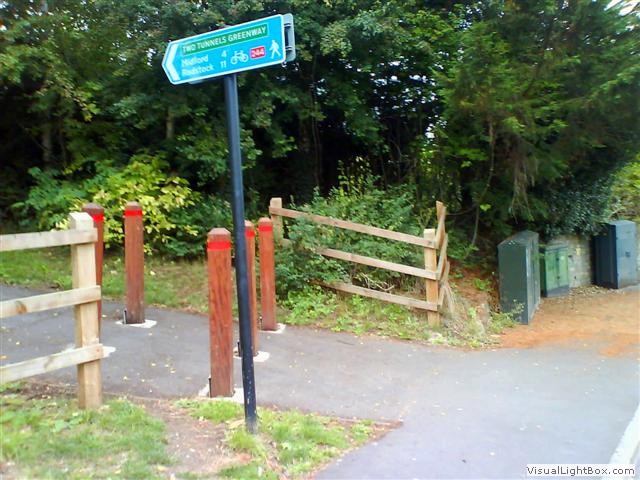 The entrance to the two tunnels cycle path (via Linear park) is discreet, but what a treat the path is.
It meanders through a park climbing at a pleasant gradient (to read another account of the two tunnels click
here). The first of the
tunnels is is dimly lit, but you can still see the smoke stains on the roof. The second
tunnel is much longer at nearly a mile long. In the middle, where once railway workers
would have sheltered in a recess in the wall as a train passed, now it houses classical music stations.
The entrance to the two tunnels cycle path (via Linear park) is discreet, but what a treat the path is.
It meanders through a park climbing at a pleasant gradient (to read another account of the two tunnels click
here). The first of the
tunnels is is dimly lit, but you can still see the smoke stains on the roof. The second
tunnel is much longer at nearly a mile long. In the middle, where once railway workers
would have sheltered in a recess in the wall as a train passed, now it houses classical music stations.
Back into the light you immediately cross a small viaduct before passing Midford station, now just a platform. After a while the path drops off and the cycling route is forced onto the road, up a short steep hill, and into Wellow village. The route roughly follows the old railway line, crossing it on road bridges and even running along some of the route, now converted into road. I’ve started to follow the old railway routes on Google satellite maps view, the trackbed can easily be identified crossing fields, and through villages, typically presenting as a double tree lined lane. At Shoscombe the line had to use a viaduct to cross an acute dip in the land, the remaining viaduct arches have been converted into private accommodation.
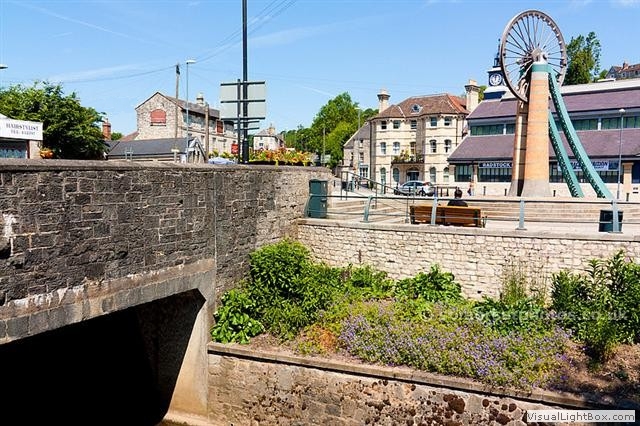 I finally arrived at Radstock, Radstock is one of those ‘why would you come here’ towns, it has road links, but
when the railways were withdrawn, the town fell into decline. It’s hard to believe the Great Western Railway, and
the Somerset and Dorset Railway converged here, establishing stations and marshalling yards in the town. I stopped for
coffee in a little shop near the river bridge before heading off towards Frome on the national cycle route
24, another off road railway route converted into a path. This trail still has the trackbed, sleepers, and
railway lines in place adjacent to the cycle path running which runs nearly to Frome. It’s not a spectacular scenic
route, being overshadowed by trees most of the way, but at least it’s off road. Sadly, since I last rode along this
very path two years ago, the vegetation is now slowly trying to absorb the line.
I finally arrived at Radstock, Radstock is one of those ‘why would you come here’ towns, it has road links, but
when the railways were withdrawn, the town fell into decline. It’s hard to believe the Great Western Railway, and
the Somerset and Dorset Railway converged here, establishing stations and marshalling yards in the town. I stopped for
coffee in a little shop near the river bridge before heading off towards Frome on the national cycle route
24, another off road railway route converted into a path. This trail still has the trackbed, sleepers, and
railway lines in place adjacent to the cycle path running which runs nearly to Frome. It’s not a spectacular scenic
route, being overshadowed by trees most of the way, but at least it’s off road. Sadly, since I last rode along this
very path two years ago, the vegetation is now slowly trying to absorb the line.
The path abruptly stops at Great Elm, where it directs you back on the road. Google satellite maps show the railway route continues uninterrupted to Frome. I rode down through the dark dank leafy village of Great Elm and back up a steep hill, passing the outskirts of Frome, worth a visit, but not today. The route enters a wood and bizarrely the grass road verges are mowed and looked like a prize lawn, all becomes clear; I’m on the Longleat estate. Several road signs warn motorists they’re on a private road and they're under surveillance and must turn back, this is slightly intimidating especially when you come to a barrier in the road, further on another sign warned ‘do not proceed- live animals’, my anal sphincter began to spasm, but the bottom corner showed a National cycle route sign pointing straight ahead (a sigh of relief I’m not going to be marched off by security or eaten by a lion. Then again, a drop down barrier is hardly going to prevent a lion from escaping, I told myself to get a grip). You actually go against the flow of traffic on the other side of the barrier, so be careful, as a precaution I put my flashing day light on.
A little way on, you’re no longer in woodland as the vista opens
up to rolling luscious lawns, leading to the main Longleat house.
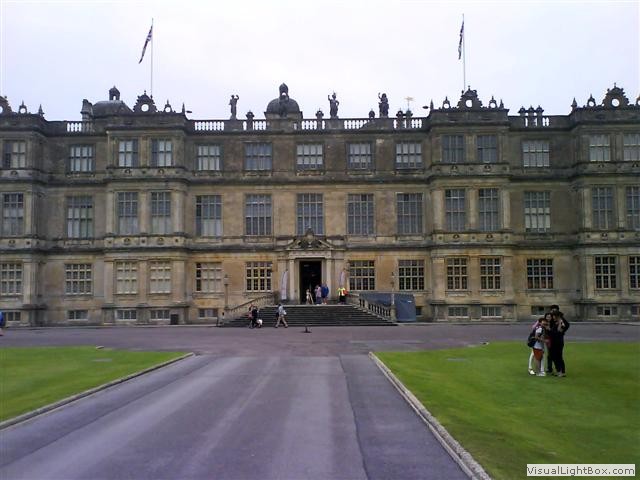 The house is fantastic and I’m so privileged to be here (as the rest of the general public have
purchased a ticket to be here), thank you Lord Longleat (Alexander Thynn, the
Marquess of Bath) please keep the cycle route open. After a
few photos, I left the main house along a mile long driveway and through the gate house into
Horningsham.
The house is fantastic and I’m so privileged to be here (as the rest of the general public have
purchased a ticket to be here), thank you Lord Longleat (Alexander Thynn, the
Marquess of Bath) please keep the cycle route open. After a
few photos, I left the main house along a mile long driveway and through the gate house into
Horningsham.
The sun was radiant and I was on a high riding through the beautiful English countryside that was until I came across a gate with a sign; ‘Live stock grazing with bull and calves (it gets worse) do not approach and give a wide berth.’ Again ‘holy sh~t’, how bad could it be? It was fine and I rode across a dirt track to Stourhead Manor, a little diversion, but worth a visit. Like Longleat you could spend hours here as the grounds are massive, but today I just had a coffee, and carrot cake in the overcrowded wasp infested outdoor area next to the restaurant. I motored along Bells Lane leading away from the manor along car-less lanes passing through Milton-on-Stour.
The next big town is Gillingham, but I didn’t want to stop here, as I only had a few miles to go. Ahead was a substantial hill, but the end of the day was near as half way up the hill was my accommodation; the Kings Arms Inn. At first it was all shut up, but after a short phone call, the proprietor let me in, and allowed me to store the bike in function room, he showed me up to my room. I had, by accident, stumbled upon a gem; the only reason I choose to stay here when planning the ride six months ago, was it was exactly at the right mileage. There are only two rooms in this Inn, clean and tidy and very adequate, but the gem is in the food. At night, it’s a bistro pub with an endless trickle of locals who have to book their tables weeks in advance. With Stowford Press cider on tap (my favourite) and an Al la Carte menu I was beaming all over my face. The food was fantastic and the total cost of the bill (including accommodation) was an incredible sixty eight pounds (breakfast is extra if you want it).
Day 3- East Stour to Bournemouth (43 miles)
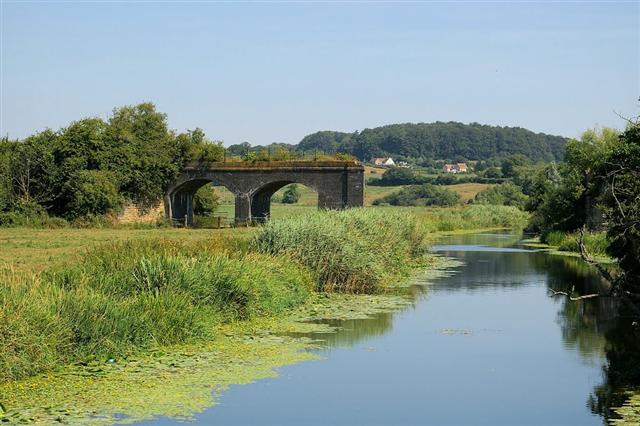 I made my own breakfast today; trusty porridge, and set off. The national cycle route was just across
the road, the last two days were tipping down, and overcast respectively, today the sun was radiant; it
was short sleeves and shorts, a true summers day, funny that hey. After ten miles through pleasant
lanes I reached Sturminster Newton, the start of the North Dorset trail, described as a multi-purpose
path for cyclists, walkers and horse riders. It was a bit hard to find, with the entrance tucked
in the corner of the town car park, then I'm back on the old Somerset and Dorset line.
After a few miles in the sun, I came across Shillingstone station. There’s a signal box, station (with
a small museum, shop, and model railway) and a carriage that doubles up as the seats for the cafe, the
views with my tea were incredible.
I made my own breakfast today; trusty porridge, and set off. The national cycle route was just across
the road, the last two days were tipping down, and overcast respectively, today the sun was radiant; it
was short sleeves and shorts, a true summers day, funny that hey. After ten miles through pleasant
lanes I reached Sturminster Newton, the start of the North Dorset trail, described as a multi-purpose
path for cyclists, walkers and horse riders. It was a bit hard to find, with the entrance tucked
in the corner of the town car park, then I'm back on the old Somerset and Dorset line.
After a few miles in the sun, I came across Shillingstone station. There’s a signal box, station (with
a small museum, shop, and model railway) and a carriage that doubles up as the seats for the cafe, the
views with my tea were incredible.
From here, the route is quite popular and is borderline mountain bike wheels. After crossing the river Stour, I entered the lovely village of Stourpaine, full of quaint thatched houses; unbeknown to me this was to be the theme of the day. Once through the village it’s back on the North Dorset trail. The surface is now packed grit and is more ridable. Fair-play, it was quite satisfying crossing the rolling country side without climbing massive hills; courtesy of the old railway line. The route took me directly into Blanford Forum, marking the end of this part of the trail; they’ve left some rails exposed in the trail car park, a nice little touch. Blandford Forum is obviously proud of its rail links as they have also left the abutments for the old railway river crossing, a modern steel bridge now replaces the route across the river Stour. After a short stint on main roads it’s back on the trail. The route now becomes overshadowed by trees, but the sun filtered through making good light. I stopped at the Spetisbury station project, a double sided platform that looks like a one man band is trying to restore the station; best of luck to him or them.
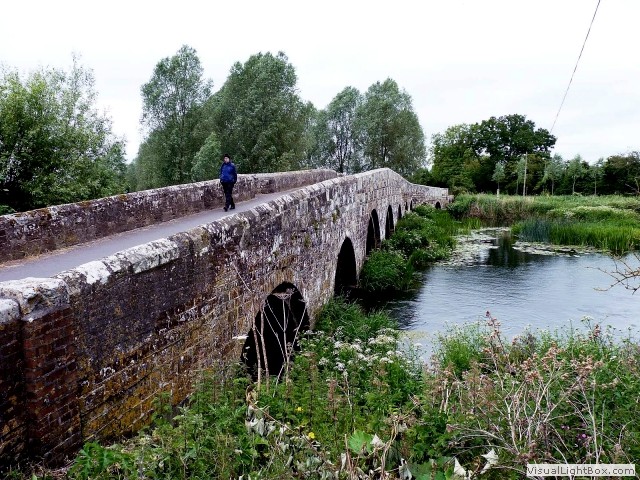 Just as I was settling in to the route, it abruptly stops leaving me studying the Garmin for some kind of
explanation. I sighed a little relief when I crossed the main road and rode across the Stour and Crawford
river bridge into quiet lanes. A little way on, I rode two hundred yards off the pre-planned route to look
at White Mill, an 18th-century corn mill, rebuilt in 1776 on a site marked in the Domesday Book. The roads
are more or less flat and secluded enough not to have cars belting past me, the cars that do pass; seem to
be admiring the countryside in the same way as me. At Wimbourne Minster I got a little confused with the
Garmin telling me to go up a one way street, but it was such a nice little place I didn’t mind walking for
a bit. I crossed the River Stour again on a new pedestrian bridge lashed to a Norman bridge and I wondered
how they got planning permission to construct such a thing. Then it’s back on another railway path, passing
Broadstone golf course on my right. I left the trail and rode along a cycle path adjacent to the main road,
and I could smell the salt water.
Just as I was settling in to the route, it abruptly stops leaving me studying the Garmin for some kind of
explanation. I sighed a little relief when I crossed the main road and rode across the Stour and Crawford
river bridge into quiet lanes. A little way on, I rode two hundred yards off the pre-planned route to look
at White Mill, an 18th-century corn mill, rebuilt in 1776 on a site marked in the Domesday Book. The roads
are more or less flat and secluded enough not to have cars belting past me, the cars that do pass; seem to
be admiring the countryside in the same way as me. At Wimbourne Minster I got a little confused with the
Garmin telling me to go up a one way street, but it was such a nice little place I didn’t mind walking for
a bit. I crossed the River Stour again on a new pedestrian bridge lashed to a Norman bridge and I wondered
how they got planning permission to construct such a thing. Then it’s back on another railway path, passing
Broadstone golf course on my right. I left the trail and rode along a cycle path adjacent to the main road,
and I could smell the salt water.
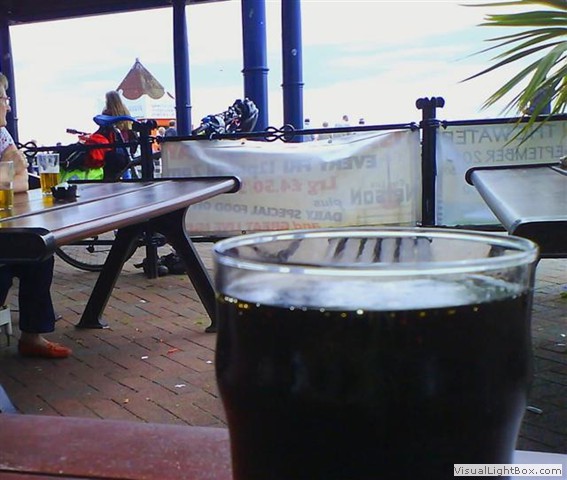 The path now follows ‘Holes bay’ into Poole and all the way to Poole quay. I had a well deserved pint of
coke in the Lord Nelson before plodding on through Baiter Park, and Sandbanks before turning left at the
beach. The sun was scorching, it was lovely and hot adding to frequent stops for more water. The last leg of
the 120 mile journey was along the promenade to Bournemouth. Within two hundred yards, I had three Australian
life guards tell me I couldn’t ride along here during august. At first, I resisted and continued to ride at a
snail’s pace, but it was such a nice day I stopped for a coffee and changed into my trainers, I walked the
last two miles before ascending the cliffs on the cliff railway. At the top, I hopped back on my bike and
rode the last mile to the hotel. After a shower and a text from my mate who should’ve ridden the route with
me, I walked to the bar and ordered two pints, and sat in the sun waiting for my mate who had caught the
train down. Two sips and he was there, good timing or what?
The path now follows ‘Holes bay’ into Poole and all the way to Poole quay. I had a well deserved pint of
coke in the Lord Nelson before plodding on through Baiter Park, and Sandbanks before turning left at the
beach. The sun was scorching, it was lovely and hot adding to frequent stops for more water. The last leg of
the 120 mile journey was along the promenade to Bournemouth. Within two hundred yards, I had three Australian
life guards tell me I couldn’t ride along here during august. At first, I resisted and continued to ride at a
snail’s pace, but it was such a nice day I stopped for a coffee and changed into my trainers, I walked the
last two miles before ascending the cliffs on the cliff railway. At the top, I hopped back on my bike and
rode the last mile to the hotel. After a shower and a text from my mate who should’ve ridden the route with
me, I walked to the bar and ordered two pints, and sat in the sun waiting for my mate who had caught the
train down. Two sips and he was there, good timing or what?
This route was far better than the first time we rode Newport to Poole, and I did enjoy it. Though it nearly ended at Bath, my shoulder was clicking so bad I thought I’d damaged it again. After a night’s sleep the clicking got better and I was able to continue. It’s a real pity my mate couldn’t have ridden it with me, but I don’t think it spoilt the ride.
-
Gallery
 Why not have a look at the gallery relating to this ride. Click the image or the title.
Why not have a look at the gallery relating to this ride. Click the image or the title. -
Church farm colliery
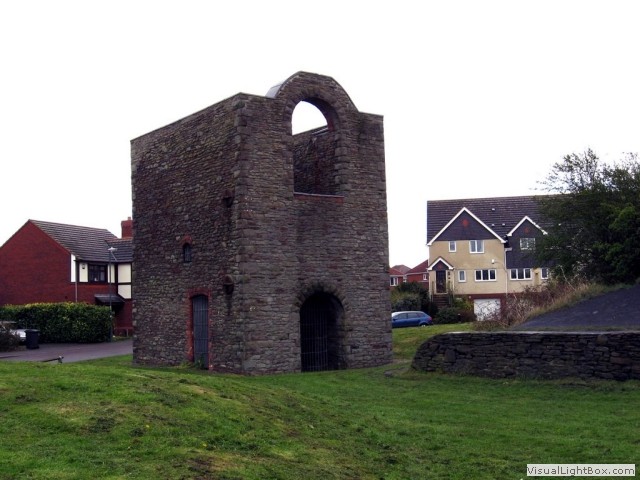 Locally known as Bullers pit, the pumping engine dates back to the late 1800’s, Church Farm
Colliery operated successfully until 1891. The Engine House is a striking visual reminder that
this area was once home to a number of collieries, but today it’s quite an odd building as it’s
in the middle of a modern housing estate.
Locally known as Bullers pit, the pumping engine dates back to the late 1800’s, Church Farm
Colliery operated successfully until 1891. The Engine House is a striking visual reminder that
this area was once home to a number of collieries, but today it’s quite an odd building as it’s
in the middle of a modern housing estate. -
Warmley Station
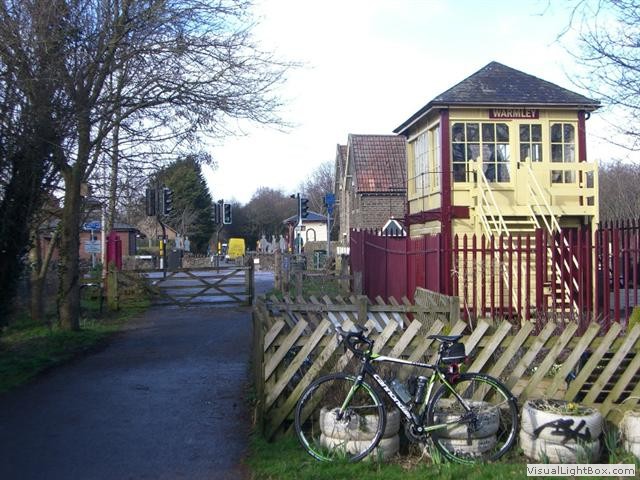 This was once part of the Midlands double tracked main line, closing in 1971.The waiting room
and signal box are the best preserved on the old line.
This was once part of the Midlands double tracked main line, closing in 1971.The waiting room
and signal box are the best preserved on the old line. -
Bath Green park station
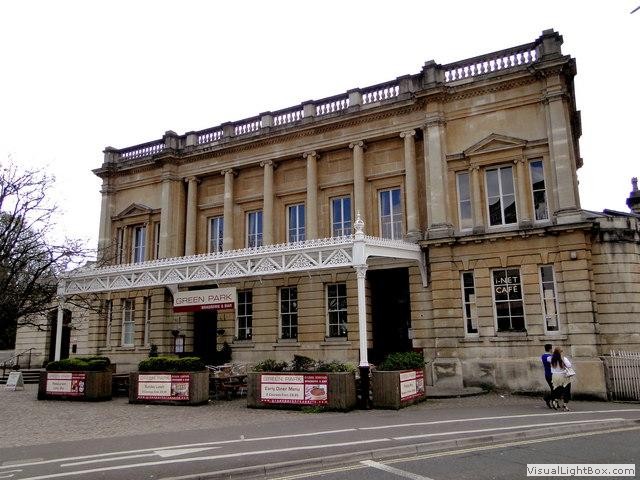 Bath Green Park station was built in an elegant style which blended well with the Georgian buildings around
it, the roof has a single-span wrought iron arch structure with vaulted glass. The booking hall is now
a Brasserie and the old station concourses are used as a covered market.
Bath Green Park station was built in an elegant style which blended well with the Georgian buildings around
it, the roof has a single-span wrought iron arch structure with vaulted glass. The booking hall is now
a Brasserie and the old station concourses are used as a covered market. -
St James cemetery Bath.
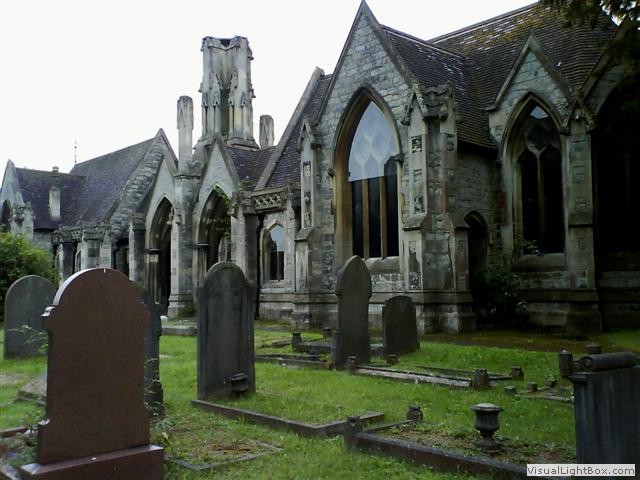 The Commonwealth War Graves Commission ensures that 1.7 million people who died in the two world wars
will never be forgotten. They care for cemeteries and memorials at 23,000 locations, in 154 countries.
There are 41 war graves at St James cemetery Bath.
The Commonwealth War Graves Commission ensures that 1.7 million people who died in the two world wars
will never be forgotten. They care for cemeteries and memorials at 23,000 locations, in 154 countries.
There are 41 war graves at St James cemetery Bath. -
Tunnel refuges
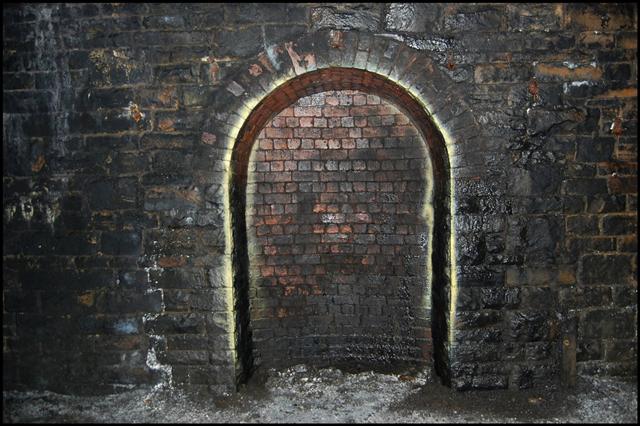 When the tunnel needed maintenance, it was not the practice to shut the railway to allow
people to work, instead workers would listen for trains, or the pulse of air that betrayed the
entry of a train into the tunnel, they'd then take refuge in the nearest side arch. Holy sh~t, I
wonder what Health & safety would say about that today.
When the tunnel needed maintenance, it was not the practice to shut the railway to allow
people to work, instead workers would listen for trains, or the pulse of air that betrayed the
entry of a train into the tunnel, they'd then take refuge in the nearest side arch. Holy sh~t, I
wonder what Health & safety would say about that today. -
Sorry Radstockers
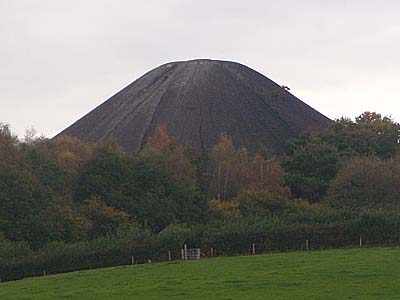 I really can’t think of anything nice to say about Radstock, it’s a former mining community that’s lost
in time, not the buildings, just the place. Oh, it's got a big slag heap. Sorry Radstockers- not my kind of town.
I really can’t think of anything nice to say about Radstock, it’s a former mining community that’s lost
in time, not the buildings, just the place. Oh, it's got a big slag heap. Sorry Radstockers- not my kind of town. -
Continuing Colliers way cycle path to Frome
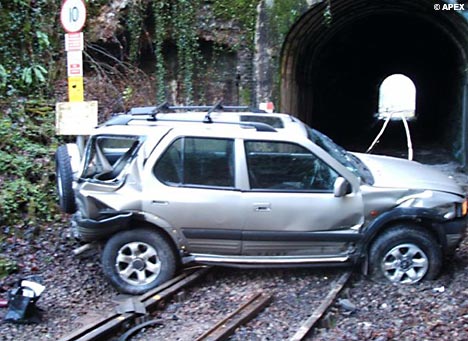 On a previous ride I believed the railway from Great Elm to Frome was unused, it actually feeds the
thriving Whatley quarry about a mile away. So a cycle path from here along the current trackbed to Frome is
unlikely, however it does promote the ‘North Somerset Railway’s’ scheme to return full working
railway services to Radstock (only 5 miles away). Let’s put it this way; anything that
enhances Radstock is a good thing.
On a previous ride I believed the railway from Great Elm to Frome was unused, it actually feeds the
thriving Whatley quarry about a mile away. So a cycle path from here along the current trackbed to Frome is
unlikely, however it does promote the ‘North Somerset Railway’s’ scheme to return full working
railway services to Radstock (only 5 miles away). Let’s put it this way; anything that
enhances Radstock is a good thing. -
Don't stop to feed the lions
 Longleat is the current home of the Marquesses of Bath, the house is an early example of the Elizabethan
prodigy house with extraordinary landscaped parkland. In 1966 Longleat set up the first
drive-through safari park outside Africa. The safari park was the first of its kind anywhere
in the world; the original concept was the brainchild of Jimmy Chipperfield, former co-director
of Chipperfield's Circus.
Longleat is the current home of the Marquesses of Bath, the house is an early example of the Elizabethan
prodigy house with extraordinary landscaped parkland. In 1966 Longleat set up the first
drive-through safari park outside Africa. The safari park was the first of its kind anywhere
in the world; the original concept was the brainchild of Jimmy Chipperfield, former co-director
of Chipperfield's Circus. -
Stourhead manor
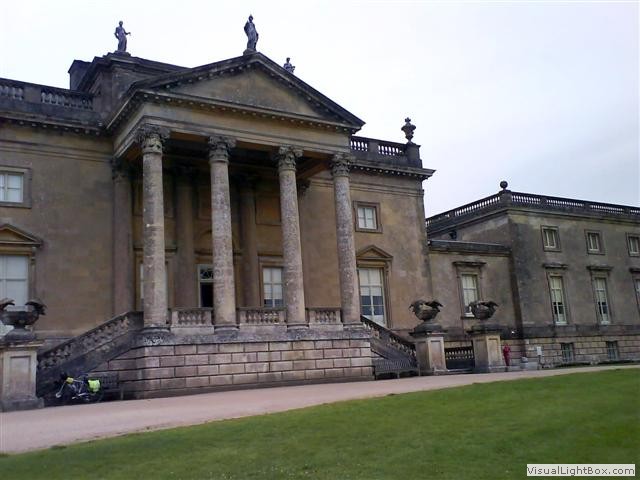 A manor house, gardens and a spectacular landscaped lake; the path around the lake is meant to
evoke a journey similar to that of Aeneas's descent in to the underworld, monuments are used to
frame one another, it’s an impressive place.
A manor house, gardens and a spectacular landscaped lake; the path around the lake is meant to
evoke a journey similar to that of Aeneas's descent in to the underworld, monuments are used to
frame one another, it’s an impressive place. -
A nice piece of cheese in the next town
 Sturminster Newton proudly boasts of having one of the largest cheese festivals in the UK. You
can buy just about every variety of cheese there. So if dodging lions is not your thing, try the cheese.
Sturminster Newton proudly boasts of having one of the largest cheese festivals in the UK. You
can buy just about every variety of cheese there. So if dodging lions is not your thing, try the cheese. -
Shillingstone station
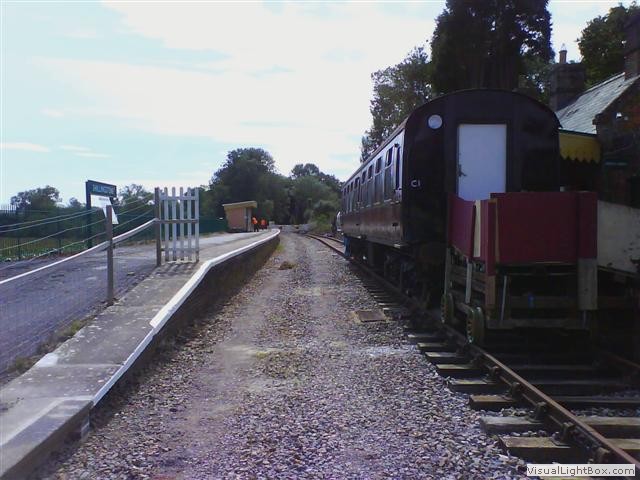 Shillingstone Station was opened by The Dorset Central Railway in 1863. After closure in the
1960’s Dorset County Council purchased the trackbed for a proposed by-pass. By
2002, the by-pass plan had been shelved and the station was unoccupied. The North
Dorset Railway Trust took over the lease in July 2005 and began to rebuild.
Shillingstone Station was opened by The Dorset Central Railway in 1863. After closure in the
1960’s Dorset County Council purchased the trackbed for a proposed by-pass. By
2002, the by-pass plan had been shelved and the station was unoccupied. The North
Dorset Railway Trust took over the lease in July 2005 and began to rebuild. -
Blanford Forum army camp
 Blanford Forum has a long history with the army, during the World war II the Royal Artillery trained
there and continued to occupy the camp for several decades, now its the home of the Royal signals who
have a museum in the town centre.
Blanford Forum has a long history with the army, during the World war II the Royal Artillery trained
there and continued to occupy the camp for several decades, now its the home of the Royal signals who
have a museum in the town centre. -
Wimborne Minster Church
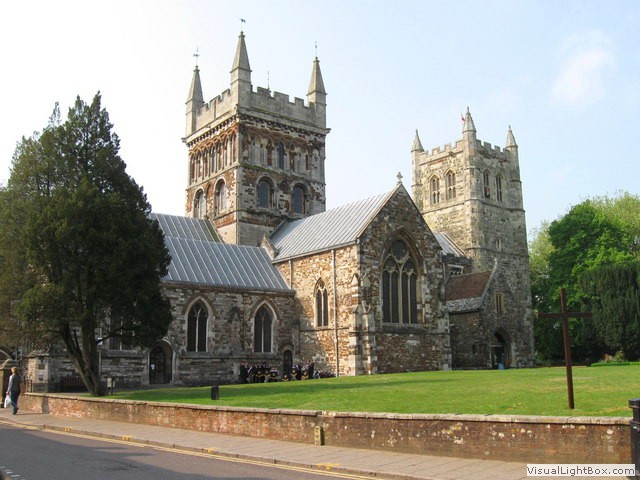 Is a Saxon Church in the centre of Wimborne Minster, with Norman and Gothic architecture. It is
famed for its chained library and the tombs of King Ethelred, the brother of Alfred the Great.
Is a Saxon Church in the centre of Wimborne Minster, with Norman and Gothic architecture. It is
famed for its chained library and the tombs of King Ethelred, the brother of Alfred the Great. -
Poole Harbour
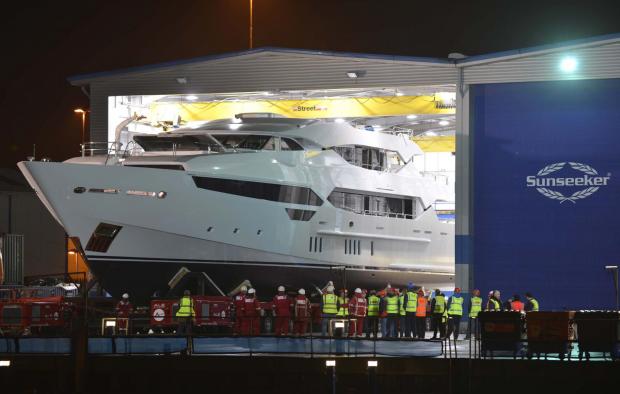 Poole is natural harbour dating back to Roman times and is claimed to be the largest natural
harbour in Europe. It’s a very popular place especially in the summer; when the quay area is packed
with people. Sunseeker International the British luxury motor yacht manufacturer, has its headquarters
and main assembly facility in Poole Harbour. It would take a rollover lottery win to buy one of
these yacht’s.
Poole is natural harbour dating back to Roman times and is claimed to be the largest natural
harbour in Europe. It’s a very popular place especially in the summer; when the quay area is packed
with people. Sunseeker International the British luxury motor yacht manufacturer, has its headquarters
and main assembly facility in Poole Harbour. It would take a rollover lottery win to buy one of
these yacht’s.

 Locally known as Bullers pit, the pumping engine dates back to the late 1800’s, Church Farm
Colliery operated successfully until 1891. The Engine House is a striking visual reminder that
this area was once home to a number of collieries, but today it’s quite an odd building as it’s
in the middle of a modern housing estate.
Locally known as Bullers pit, the pumping engine dates back to the late 1800’s, Church Farm
Colliery operated successfully until 1891. The Engine House is a striking visual reminder that
this area was once home to a number of collieries, but today it’s quite an odd building as it’s
in the middle of a modern housing estate. This was once part of the Midlands double tracked main line, closing in 1971.The waiting room
and signal box are the best preserved on the old line.
This was once part of the Midlands double tracked main line, closing in 1971.The waiting room
and signal box are the best preserved on the old line.  Bath Green Park station was built in an elegant style which blended well with the Georgian buildings around
it, the roof has a single-span wrought iron arch structure with vaulted glass. The booking hall is now
a Brasserie and the old station concourses are used as a covered market.
Bath Green Park station was built in an elegant style which blended well with the Georgian buildings around
it, the roof has a single-span wrought iron arch structure with vaulted glass. The booking hall is now
a Brasserie and the old station concourses are used as a covered market.  The Commonwealth War Graves Commission ensures that 1.7 million people who died in the two world wars
will never be forgotten. They care for cemeteries and memorials at 23,000 locations, in 154 countries.
There are 41 war graves at St James cemetery Bath.
The Commonwealth War Graves Commission ensures that 1.7 million people who died in the two world wars
will never be forgotten. They care for cemeteries and memorials at 23,000 locations, in 154 countries.
There are 41 war graves at St James cemetery Bath. When the tunnel needed maintenance, it was not the practice to shut the railway to allow
people to work, instead workers would listen for trains, or the pulse of air that betrayed the
entry of a train into the tunnel, they'd then take refuge in the nearest side arch. Holy sh~t, I
wonder what Health & safety would say about that today.
When the tunnel needed maintenance, it was not the practice to shut the railway to allow
people to work, instead workers would listen for trains, or the pulse of air that betrayed the
entry of a train into the tunnel, they'd then take refuge in the nearest side arch. Holy sh~t, I
wonder what Health & safety would say about that today. I really can’t think of anything nice to say about Radstock, it’s a former mining community that’s lost
in time, not the buildings, just the place. Oh, it's got a big slag heap. Sorry Radstockers- not my kind of town.
I really can’t think of anything nice to say about Radstock, it’s a former mining community that’s lost
in time, not the buildings, just the place. Oh, it's got a big slag heap. Sorry Radstockers- not my kind of town.  On a previous ride I believed the railway from Great Elm to Frome was unused, it actually feeds the
thriving Whatley quarry about a mile away. So a cycle path from here along the current trackbed to Frome is
unlikely, however it does promote the ‘North Somerset Railway’s’ scheme to return full working
railway services to Radstock (only 5 miles away). Let’s put it this way; anything that
enhances Radstock is a good thing.
On a previous ride I believed the railway from Great Elm to Frome was unused, it actually feeds the
thriving Whatley quarry about a mile away. So a cycle path from here along the current trackbed to Frome is
unlikely, however it does promote the ‘North Somerset Railway’s’ scheme to return full working
railway services to Radstock (only 5 miles away). Let’s put it this way; anything that
enhances Radstock is a good thing. Longleat is the current home of the Marquesses of Bath, the house is an early example of the Elizabethan
prodigy house with extraordinary landscaped parkland. In 1966 Longleat set up the first
drive-through safari park outside Africa. The safari park was the first of its kind anywhere
in the world; the original concept was the brainchild of Jimmy Chipperfield, former co-director
of Chipperfield's Circus.
Longleat is the current home of the Marquesses of Bath, the house is an early example of the Elizabethan
prodigy house with extraordinary landscaped parkland. In 1966 Longleat set up the first
drive-through safari park outside Africa. The safari park was the first of its kind anywhere
in the world; the original concept was the brainchild of Jimmy Chipperfield, former co-director
of Chipperfield's Circus. A manor house, gardens and a spectacular landscaped lake; the path around the lake is meant to
evoke a journey similar to that of Aeneas's descent in to the underworld, monuments are used to
frame one another, it’s an impressive place.
A manor house, gardens and a spectacular landscaped lake; the path around the lake is meant to
evoke a journey similar to that of Aeneas's descent in to the underworld, monuments are used to
frame one another, it’s an impressive place. Sturminster Newton proudly boasts of having one of the largest cheese festivals in the UK. You
can buy just about every variety of cheese there. So if dodging lions is not your thing, try the cheese.
Sturminster Newton proudly boasts of having one of the largest cheese festivals in the UK. You
can buy just about every variety of cheese there. So if dodging lions is not your thing, try the cheese. Shillingstone Station was opened by The Dorset Central Railway in 1863. After closure in the
1960’s Dorset County Council purchased the trackbed for a proposed by-pass. By
2002, the by-pass plan had been shelved and the station was unoccupied. The North
Dorset Railway Trust took over the lease in July 2005 and began to rebuild.
Shillingstone Station was opened by The Dorset Central Railway in 1863. After closure in the
1960’s Dorset County Council purchased the trackbed for a proposed by-pass. By
2002, the by-pass plan had been shelved and the station was unoccupied. The North
Dorset Railway Trust took over the lease in July 2005 and began to rebuild.  Blanford Forum has a long history with the army, during the World war II the Royal Artillery trained
there and continued to occupy the camp for several decades, now its the home of the Royal signals who
have a museum in the town centre.
Blanford Forum has a long history with the army, during the World war II the Royal Artillery trained
there and continued to occupy the camp for several decades, now its the home of the Royal signals who
have a museum in the town centre. Is a Saxon Church in the centre of Wimborne Minster, with Norman and Gothic architecture. It is
famed for its chained library and the tombs of King Ethelred, the brother of Alfred the Great.
Is a Saxon Church in the centre of Wimborne Minster, with Norman and Gothic architecture. It is
famed for its chained library and the tombs of King Ethelred, the brother of Alfred the Great. Poole is natural harbour dating back to Roman times and is claimed to be the largest natural
harbour in Europe. It’s a very popular place especially in the summer; when the quay area is packed
with people. Sunseeker International the British luxury motor yacht manufacturer, has its headquarters
and main assembly facility in Poole Harbour. It would take a rollover lottery win to buy one of
these yacht’s.
Poole is natural harbour dating back to Roman times and is claimed to be the largest natural
harbour in Europe. It’s a very popular place especially in the summer; when the quay area is packed
with people. Sunseeker International the British luxury motor yacht manufacturer, has its headquarters
and main assembly facility in Poole Harbour. It would take a rollover lottery win to buy one of
these yacht’s.